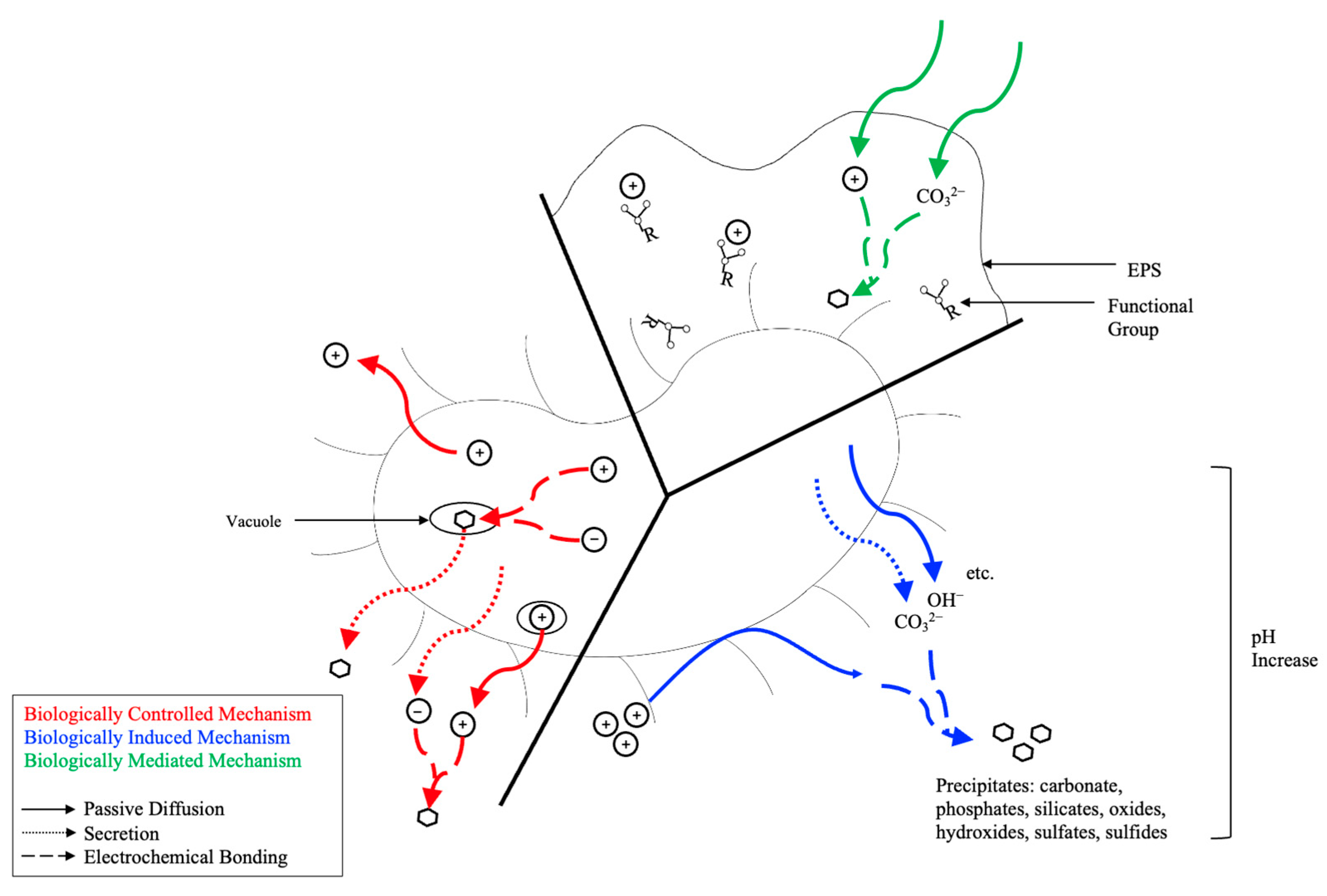2025-06-26 コンコルディア大学
<関連情報>
- https://www.concordia.ca/news/stories/2025/06/26/microbes-may-hold-the-key-to-greener-cheaper-carbon-capture.html
- https://www.mdpi.com/1422-0067/26/5/2230
炭素隔離のための鉱物炭酸化: MCPとMICPのケース Mineral Carbonation for Carbon Sequestration: A Case for MCP and MICP
Samantha M. Wilcox,Catherine N. Mulligan and Carmen Mihaela Neculita
International Journal of Molecular Sciences Published: 1 March 2025
DOI:https://doi.org/10.3390/ijms26052230

Abstract
Mineral carbonation is a prominent method for carbon sequestration. Atmospheric carbon dioxide (CO2) is trapped as mineral carbonate precipitates, which are geochemically, geologically, and thermodynamically stable. Carbonate rocks can originate from biogenic or abiogenic origin, whereby the former refers to the breakdown of biofragments and the latter precipitation out of water. Carbonates can also be formed through biologically controlled mechanisms (BCMs), biologically mediated mechanisms (BMMs), and biologically induced mechanisms (BIMs). Microbial carbonate precipitation (MCP) is a BMM occurring through the interaction of organics (extracellular polymeric substances (EPS), cell wall, etc.) and soluble cations facilitating indirect precipitation of carbonate minerals. Microbially induced carbonate precipitation (MICP) is a BIM occurring via different metabolic pathways. Enzyme-driven pathways (carbonic anhydrase (CA) and/or urease), specifically, are promising for the high conversion to calcium carbonate (CaCO3) precipitation, trapping large quantities of gaseous CO2. These carbonate precipitates can trap CO2 via mineral trapping, solubility trapping, and formation trapping and aid in CO2 leakage reduction in geologic carbon sequestration. Additional experimental research is required to assess the feasibility of MICP for carbon sequestration at large scale for long-term stability of precipitates. Laboratory-scale evaluation can provide preliminary data on preferable metabolic pathways for different materials and their capacity for carbonate precipitation via atmospheric CO2 versus injected CO2.



